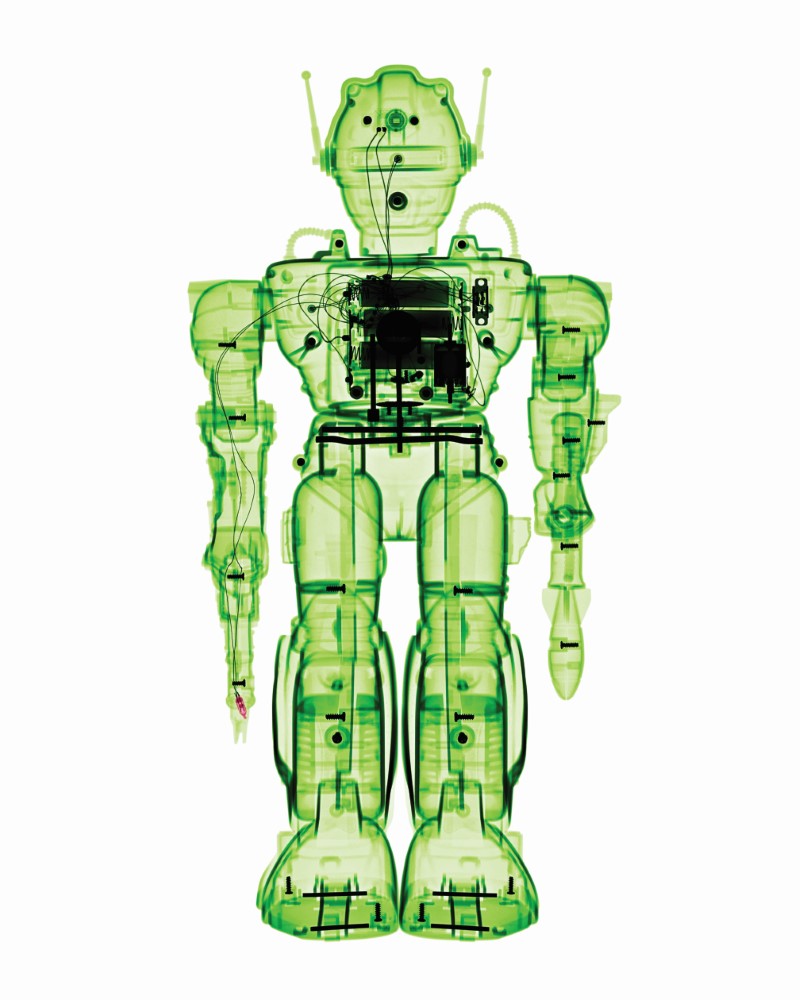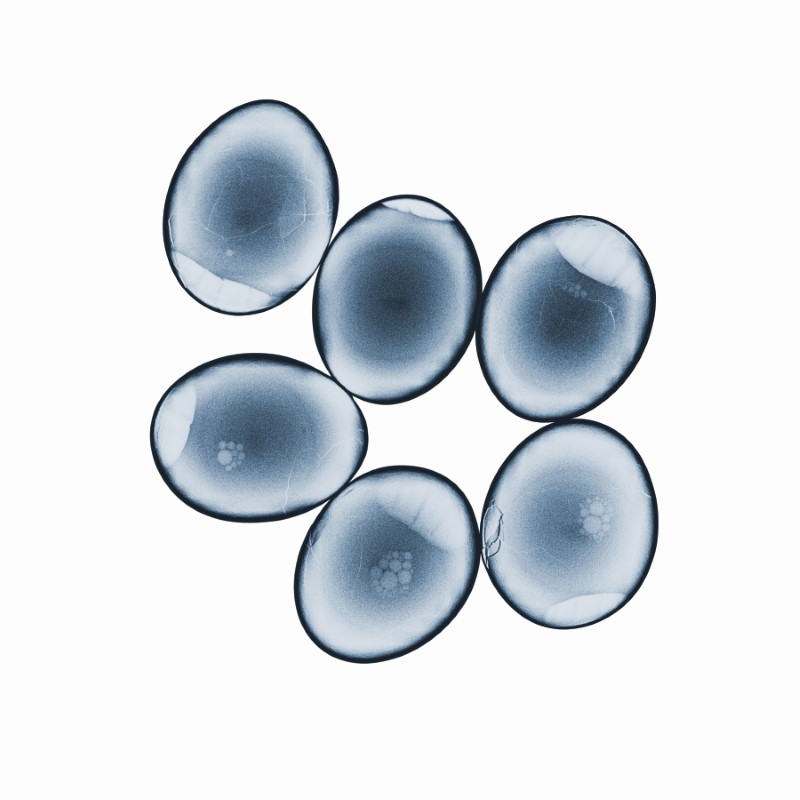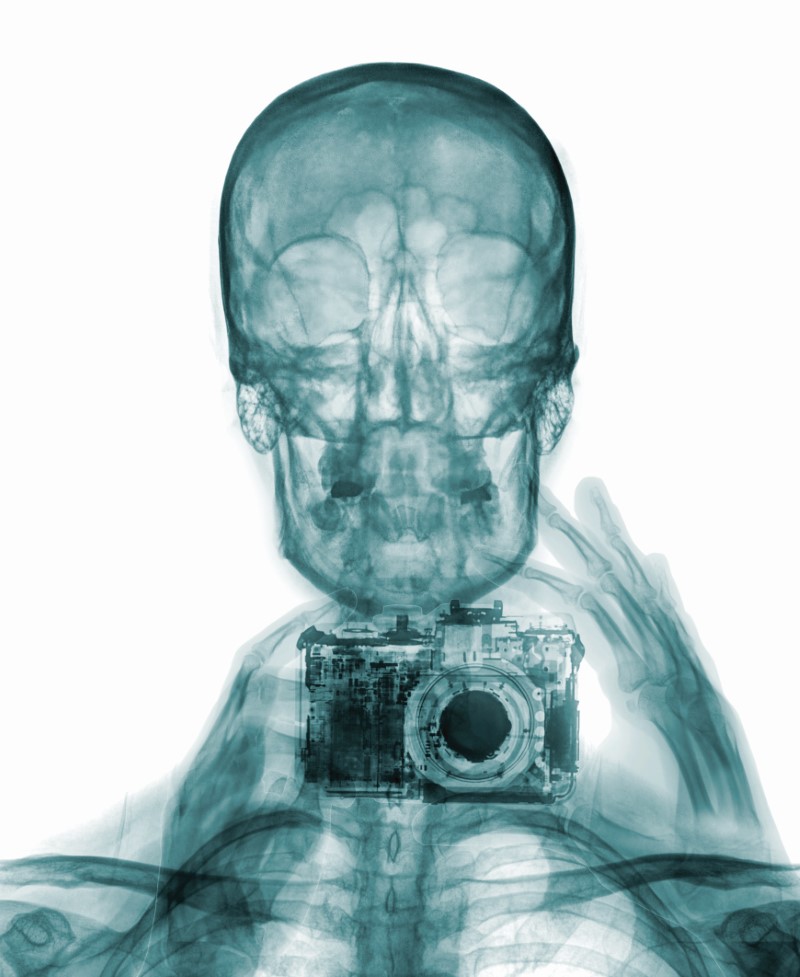Sydney-based Brendan Fitzpatrick has been working with digital imagery and design since its inception, and as technology expanded and grew in sophistication, so did the artist’s proficiency and creativity.
The Invisible Light project embraces the modernity of the medium, combining technological advances with intellectual curiosity, tempered with an innate sense of joy and whimsy. Fitzpatrick uses digital radiography to peer inside everyday objects, saying, “There is always a new way of seeing the familiar.”
Everything from toys to flowers and food are exposed to the viewer’s eye, sometimes with the artist himself making an appearance. The Invisible Light project involves taking an array of grayscale scans which the artist then carefully combines and manipulates to extract clarity, brightness and contrast, the images coming together in what the artist calls “the perfect specimen”. It is this ability to blend science and aesthetic that draws the artist to the digital medium. “Digital for me means fluidity. Every pixel is open to recombination, reinterpretation.”
The artist also adds colour to draw out the innate beauty of his subjects, with soft pastel tones accentuating the network of veins within a lily’s leaf or vivid neon hues exposing the machine-perfect plastic skeleton of a toy robot. Through digital wizardry, Fitzpatrick captures portraits of objects that give a new perspective on the prosaic – the flexibility of digital art as a medium providing the artist with entire new worlds to explore.
Above: Brendan Fitzpatrick, X-ray of Brendan & Camera, 2022. Digital print on acrylic, 60 x 40cm. Courtesy: the artist.





